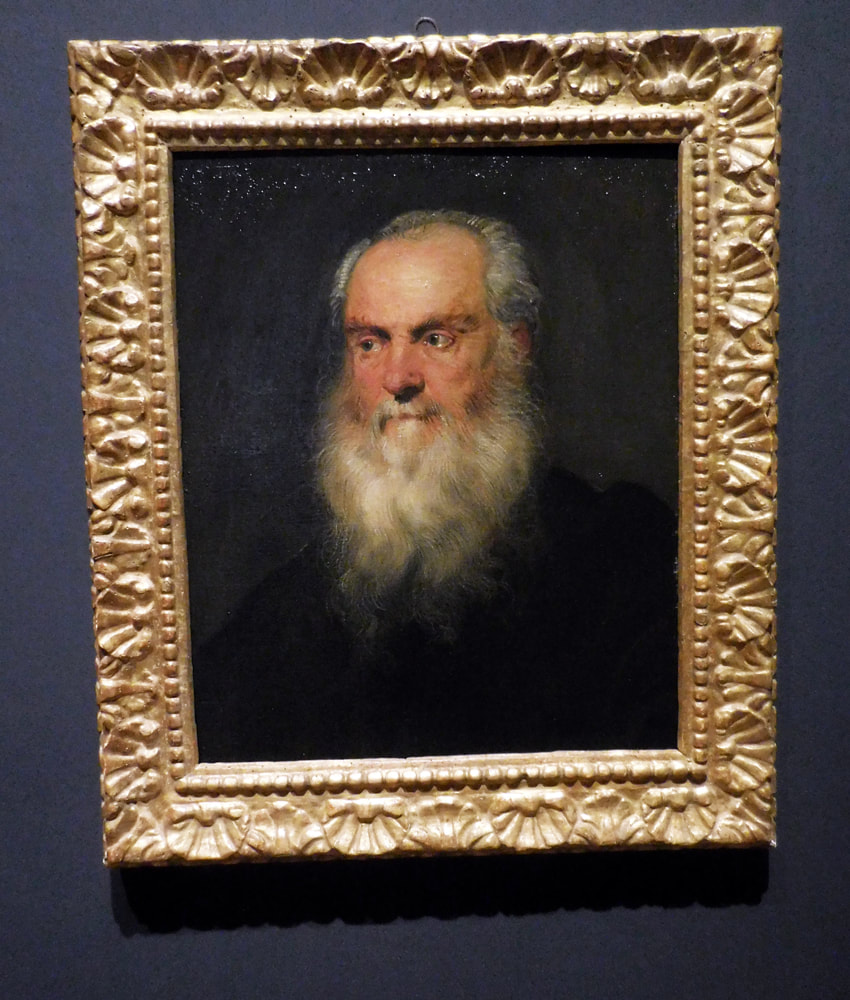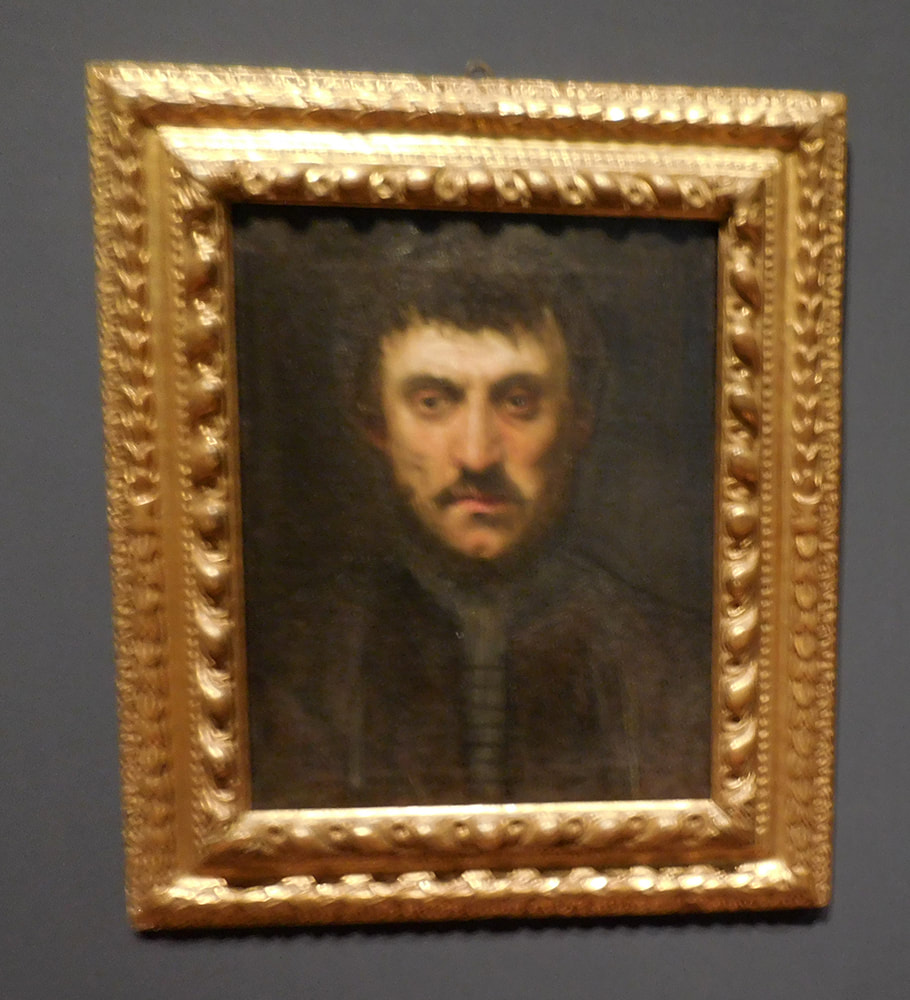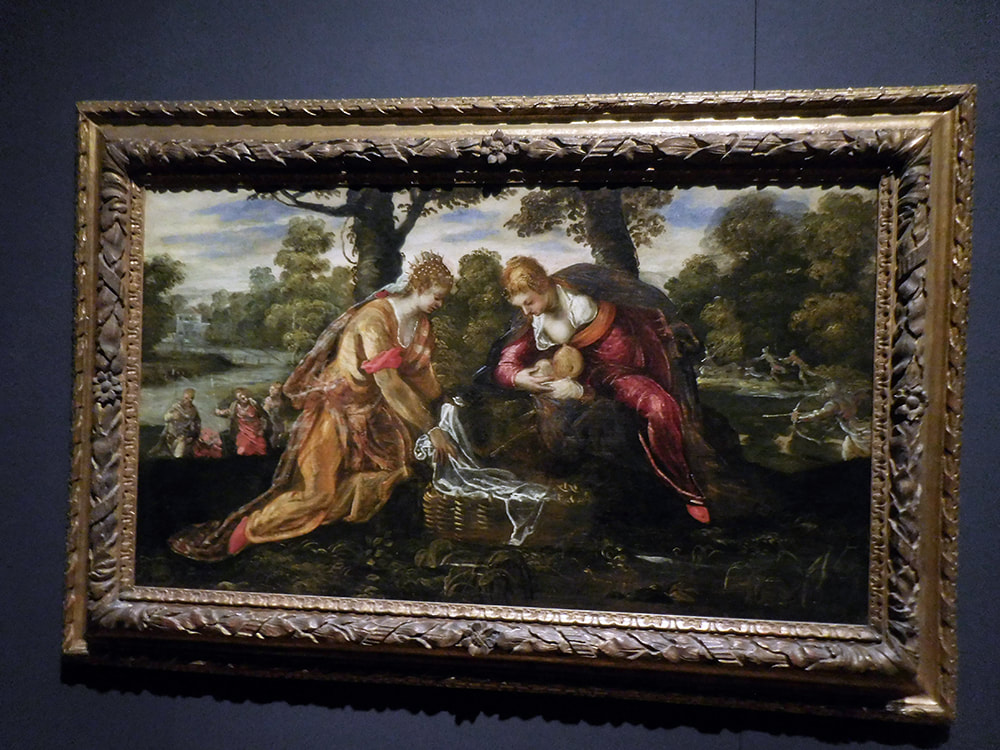"Celebrating Tintoretto: Portrait Paintings and Studio Drawings"“Celebrating Tintoretto: Portrait Paintings and Studio Drawings” at the Metropolitan Museum of Art is a small exhibition focusing primarily on the 16th century Venetian artist's informal portrait studies - - an aspect of Tintoretto's work that has not received much study. It is part of the global celebration of the 5ooth anniversary of Jacopo Tintoretto.
Of the 21 works on display, a handful are portraits including a portrait study by Tintoretto's contemporary Titian. Except for one painting which has been attributed to both Tintoretto and his son Domenico, the remaining works are drawings by Tintoretto or by his son. Tintoretto, the son of a dyer, rose to become one of the most prominent painters in Venice when Venice was at its peak of power and prosperity. He is primarily known for his large religious and historical narratives. However, he also did portrait commissions. Devoted to his art, Tintoretto spent much of his time alone working on technique. Thus, it is not surprising that he produced a number of small portrait studies to develop his technique and/or to help work out problems for larger more finished works. The studies in this exhibition are quite varied in style. Tintoretto was known for the speed with which he could develop an image from nature and several of the works here reflect a rapid approach. His brush work is often forceful and the features are relatively undeveloped. An upper lip is only a squiggle of alizarin crimson. These works anticipate painters such as John Singer Sargent and modern portraiture. Other works are more polished, with more developed features. These may have been intended as finished pieces or they may have simply reflected the artist's interest in exploring a different style. According to legend, Tintoretto was briefly enrolled in Titian's studio as a boy. Titian was the most prominent artist in Venice at the time. However, the story goes that the master dismissed the boy after just a few days, allegedly jealous of the boy's ability. Supporting this story is the fact that throughout his career Tintoretto praised Titian but the older man gave Tintoretto only grudging applause. In any event, it is interesting to compare the small Titian portrait study in the exhibition with Tintoretto's studies. The two artist's styles are quite different. The identity of the sitters in most of these works is unknown. However, the primary goal of portraiture is not to make a historical record of what a particular person looked like. Rather, it is to capture and communicate something about a person's personality. Thus, the sitter's identity is not really important. And these portraits by Tintoretto succeed because they are expressive. Although their names may be lost in the mists of time, the essence of their personalities is not. As mentioned in one of the exhibition signs, the Met loaned some of its Tintoretto drawings to the Morgan Library and Museum for an exhibition that is taking place simultaneously with this exhibition. (See our review of the Morgan exhibition). Consequently, there are only a few drawings by Tintoretto in this exhibition. There are, however, several drawings by his son Domenico Tintoretto. Clearly, both father and son placed an emphasis on drawing. However, their styles are quite different. The father's drawings are forceful, bold and sinewy. Domenico's drawings have softer, more subtle modeling. Perhaps this is due to the fact that the father was drawing men while his son was drawing women but it seems more likely a difference in artistic approach. Rounding out the exhibition is the painting “The Finding of Moses.” This religious narrative has been attributed to both Tintoretto and his son. It has also been suggested that the background may have been painted by another painter, perhaps from Northern Europe. However, according to the placard by the painting, the Met now believes that it was done by Tintoretto alone noting the bold drawing of the figures and the fact that the background is integral to the composition. This exhibition thus touches upon three, rather loosely-connected, aspects of Tintoretto's work. Much the most interesting part of the exhibition is the portrait work, which in style brings this 16th century artist into modern times. While the drawings add to the story being told at the Morgan exhibition, they would have been better included in that exhibition than with this as they do not present a stand-alone story. The “Finding of Moses” is an interesting addition but of questionable relevance to the rest of this exhibition. Still, this is a very worthwhile exhibition because the portrait studies are important and the other aspects of the exhibition do not detract from that experience. |
Above: Two portrait studies by Jacopo Tintoretto.
Below: "The Finding of Moses" attributed to Tintoretto. |
Art review -Metropolitan Museum of Art - "In Praise of Painting: Dutch Masterpieces at the Met”



